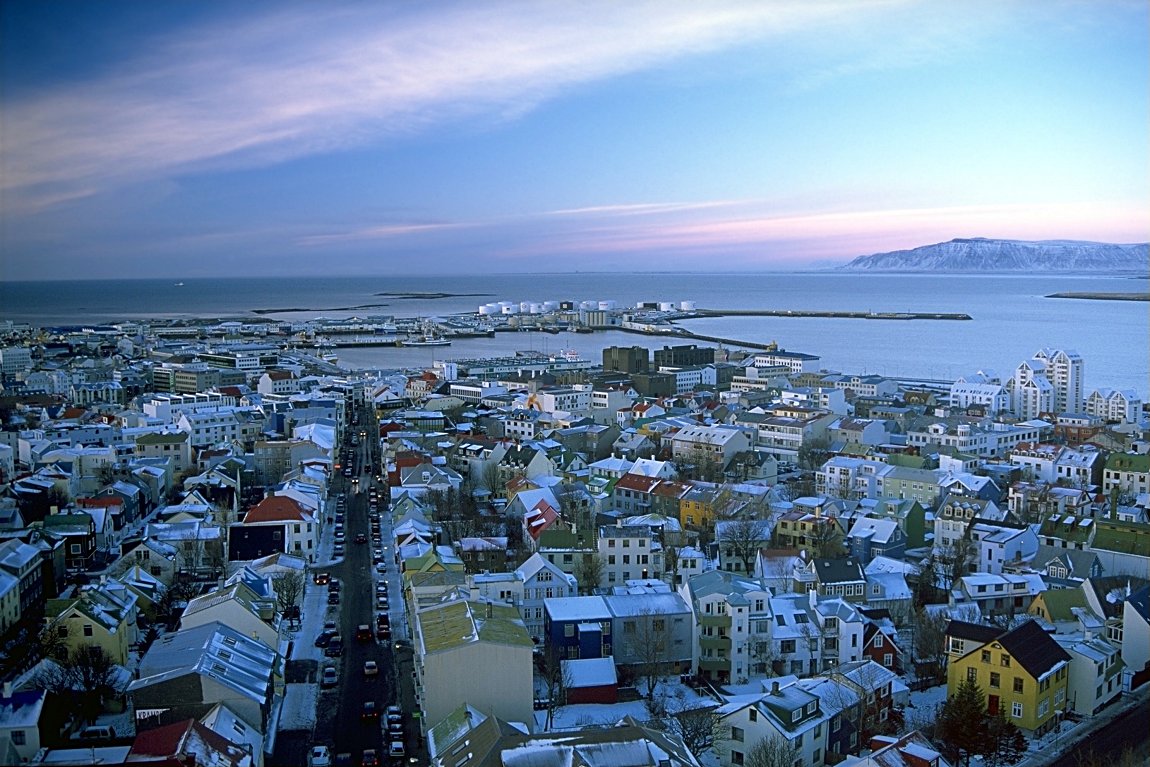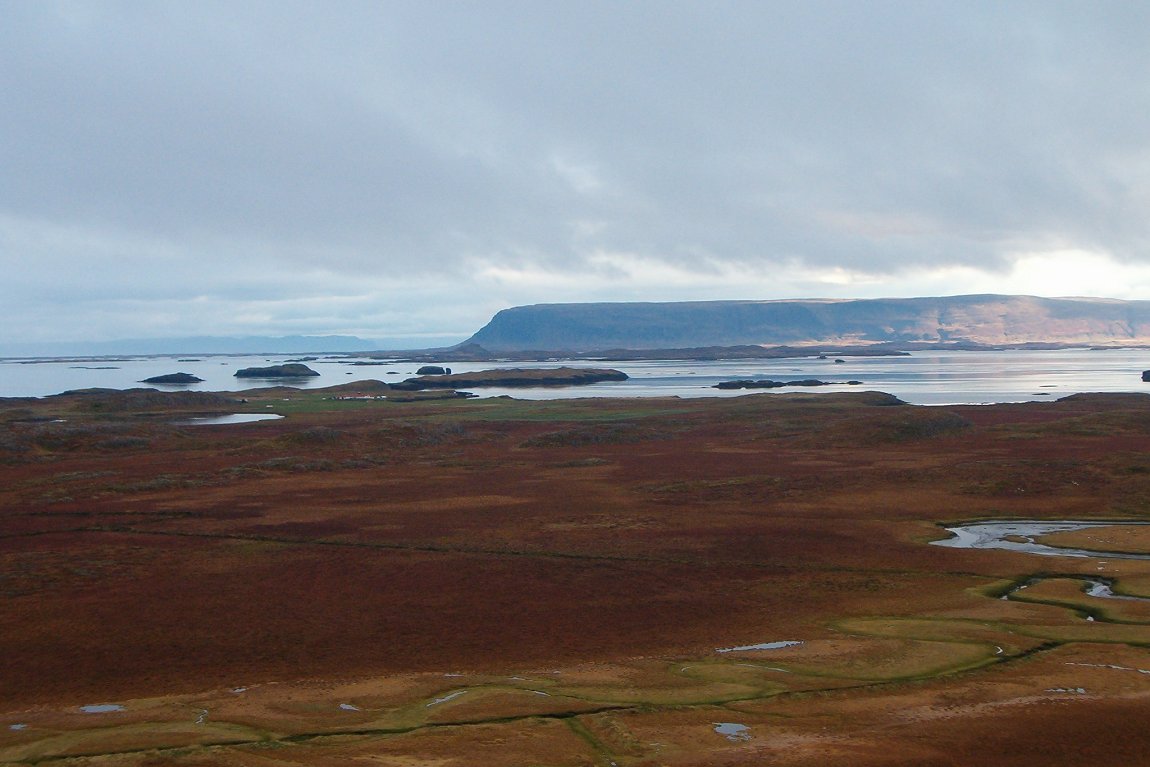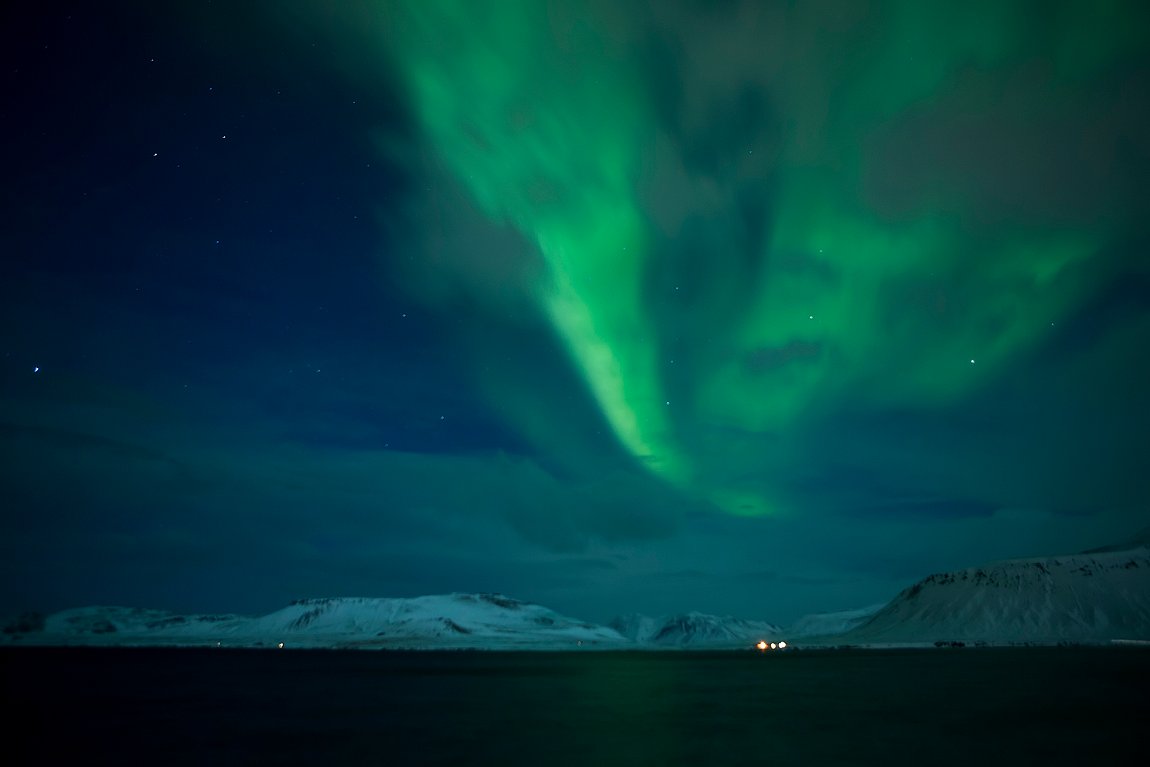 Aurora in Iceland
Aurora in IcelandSource: https://commons.wikimedia.org/wiki/Category:Aurora_in_Iceland#/media/File:Nooderlicht_boven_de_baai_van_Grondarfjordur_(8586375882).jpg
Author: Maarten Visser

Iceland is a small, rugged island nation in the North Atlantic Ocean. It is 103,000 sq km (39,769 sq mi) and has a population of around 320,000. Its capital and largest city is Reykjavík.
Iceland is believed to have been first settled by Ingólfur Arnarson, a Norwegian chieftain, in AD 874. From 1262 to 1918, it was ruled by Norway and then by Denmark. As such it developed a culture base of the Norse heritage. Its local dialect is also related to West Norwegian dialect.
Iceland is 970 km (603 mi) from the coast of Norway, its closest neighbor on the European mainland. It is 287 km (178 mi) from Greenland and 420 km (261 mi) from the Faroe Islands. It is the second largest island in Europe after Great Britain.
About 63% of the terrain of Iceland is tundra. Lakes and glaciers cover another 14.3% of the country, leaving only 23% of it vegetated. The country has many fjords along its coastline. Most of its inhabitants live along the coast, as the interior highlands are cold and inhospitable.
The climate of Iceland is subpolar oceanic. The average temperature of Reykjavik ranges from 1.9°C (35.4°F) to 7°C (44.6°F). The warmest months are July and August, with average temperature rising to 13°C (55.4°F) while the coldest is January, when it drops to -3°C (26.6°F).
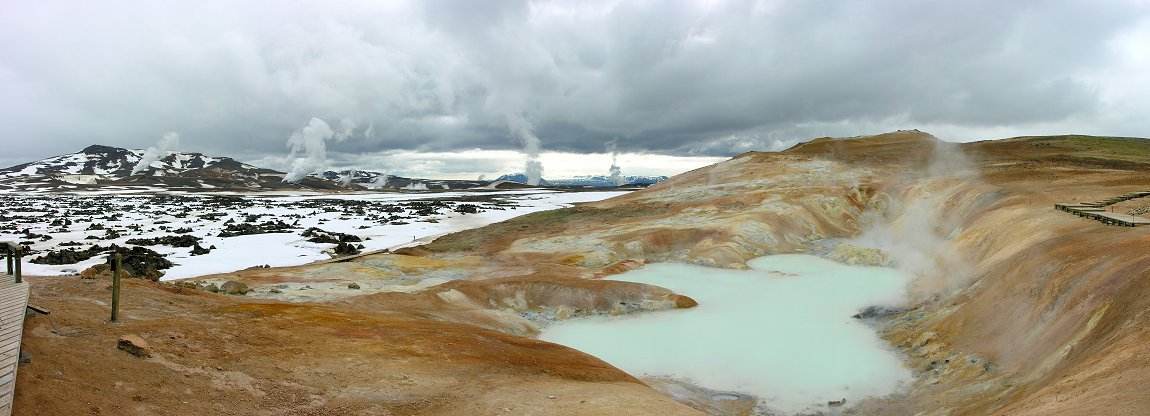 The landscape of Krafla in Iceland
The landscape of Krafla in IcelandSource: https://commons.wikimedia.org/wiki/File:2008-05-19_09_Krafla_seen_from_Leirhnj%C3%BAkur.jpg
Author: Hansueli Krapf

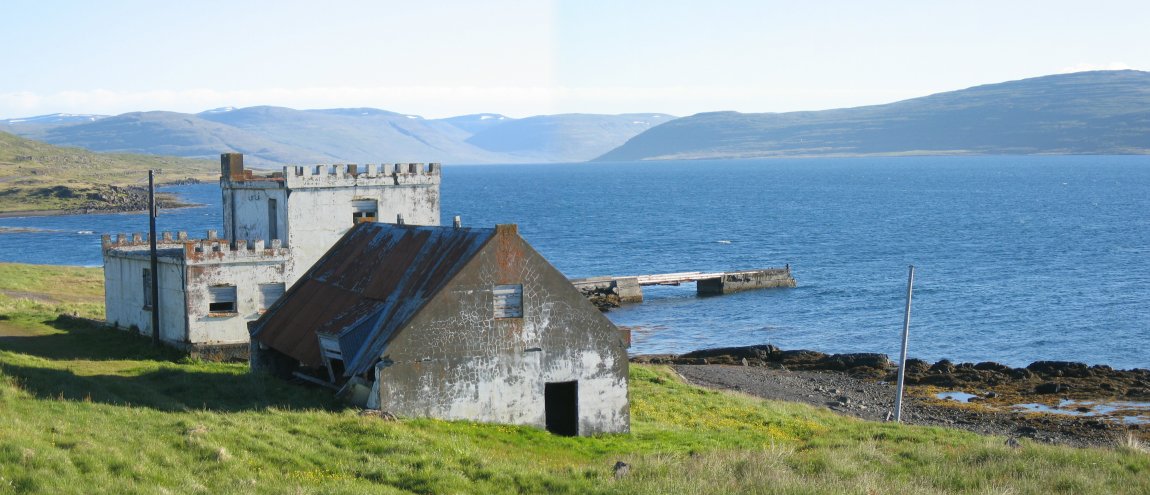 Ísafjarðardjúp, Iceland
Ísafjarðardjúp, IcelandSource: https://commons.wikimedia.org/wiki/File:Isafjardardjup.jpg
Author: Salvor Gissurardóttir

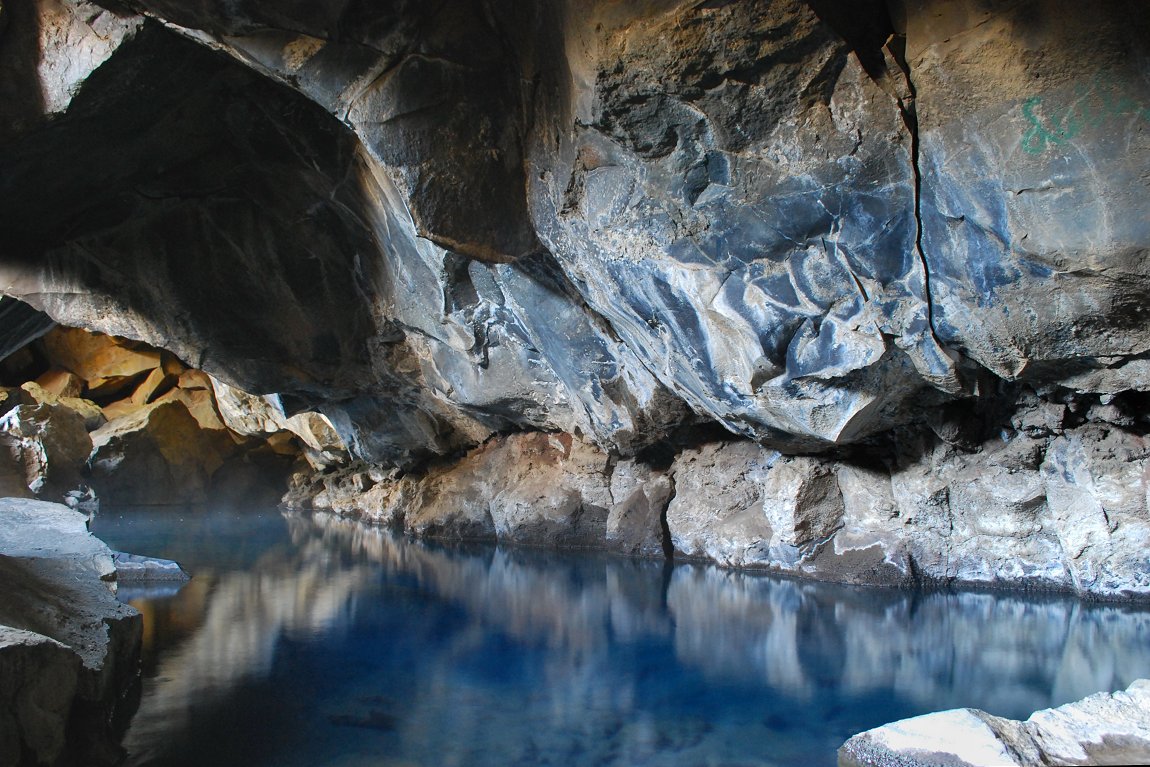 Grjótagjá Caves, Iceland
Grjótagjá Caves, IcelandSource: https://commons.wikimedia.org/wiki/File:Grj%C3%B3tagj%C3%A1_caves_in_summer_2009_%282%29_by_DerHexer.jpg
Author: Chmee2, DerHexer

Iceland on Google Maps Street View
Planning your visit to Iceland
By Plane The main international airport is the Keflavik International Airport (KEF), which is about 40 km from Reykjavík. The airport terminal is named after Icelandic discoverer Leifur Eiríksson. The airport operates only as an international airport, as domestic flights are handled by the Reykjavik Airport near the city centre. From the airport, you can take the bus (Flybus) or taxi to the city. Car rental companies are also operating from the airport terminal.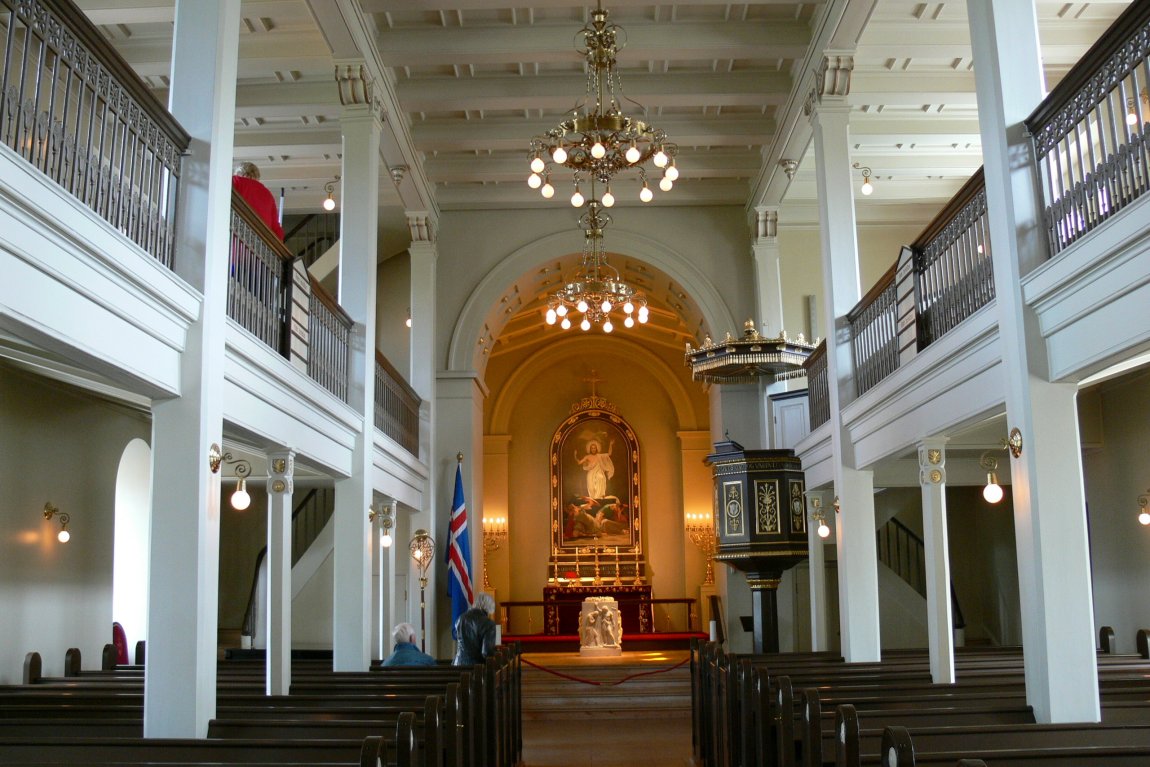 Inside Reykjavík Cathedral
Inside Reykjavík CathedralSource: https://commons.wikimedia.org/wiki/File:Domkirkjan_Innenraum.jpg
Author: Wolfgang Sauber

Preparing Money for your trip to Iceland
The currency used in Iceland is the Icelandic Krona (ISK).Major Cities in Iceland
- Reykjavík - capital
- Akureyri
- Blönduós
- Hafnarfjörður
- Hofn
- Húsavík
- Ísafjörður
- Keflavik
- Seyðisfjörður
Places of Interest in Iceland
- Blue Lagoon
- Geysir
- Gullfoss
- Jökulsárlön
- Landmannalaugar
- Mývatn
- Snæfellsjökull National Park
- Vatnajökull National Park
World Heritage Sites in Iceland
Iceland ratified the World Heritage Convention on 19 December, 1995. As of August 2010, it has two World Heritage Sites, one cultural and one natural. Iceland also has another 10 sites on the World Heritage Tentative List.Sites in Iceland on the World Heritage Tentative List
- Skaftafell (2001)
- Breiðafjörður (2001)
- Núpsstaður (2001)
- Viðmýri Turf Church (2001)
- Keldur (2001)
- G´sar (2001)
- Reykholt (2001)
- Surtsey (2001)
- Mývatn - Laxá (2001)
- Herðubreiðarlindir and Askja (2001)
 Latest updates on Penang Travel Tips
Latest updates on Penang Travel Tips

Copyright © 2003-2025 Timothy Tye. All Rights Reserved.

 Go Back
Go Back